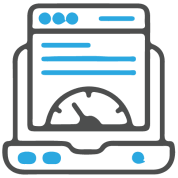The data center space is constantly shifting, with new players backed by savvy investors creating novel strategies to provide the next generation of infrastructure to the rest of the economy. One company that has been rising quickly over the past two years is Colohouse, which has blended organic and M&A activity to assemble a presence across 10 markets with more to come. With us today to talk about Colohouse’s strategy and its viewpoint on the data center marketplace is CEO Jeremy Pease, who took the helm a little less than a year ago.
TR: How did you get into this sector and what was your journey to your 2022 appointment as CEO of Colohouse?
Jeremy Pease (JP): I have been doing IT in some shape or fashion for 25 years and in the data center infrastructure world for a good 15 years now. I have had a number of operational roles as I worked my way up: help desk analyst, network operations, development, and recruiting. These positions have given me a deeper understanding of the diverse roles that create the foundation of an organization. In October of last year, I had the opportunity to see if I had the chops to take such an organization to the next step of its evolution by joining Colohouse as a CEO. I feel very fortunate and am excited to be here.
TR: What drew you to Colohouse? What opportunity did you see?
JP: It was my alignment with their vision and the direction of the next steps they wanted the company to take. I have also always been aligned with companies backed by private equity (PE) firms, and have seen what they are capable of in terms of acquisitions and growth of the business. While I have worked with several founders who bootstrapped their way to where they are, I have always focused on companies that start around $40-60M in value and expand to $200-500M. That’s really where I feel like I can specialize in and help an organization grow, and that’s where Colohouse was. It had the PE backing, and it had the direction and strategy that I was looking for.
TR: What does Colohouse look like today? What do you have, and where do you have it?
JP: We have a footprint that includes locations in Colorado Springs, Chicago, Orangeburg, Albany, Philadelphia, Atlanta, Salt Lake City, Dallas, Phoenix, and Miami, as well as a presence in the Netherlands for one of our customers. We offer mainly retail colocation (colo) rather than wholesale and provide cloud and bare metal solutions.
TR: Are there particular verticals you focus on?
JP: No, it is really anybody that needs space and power. The only change in terms of the types of companies that come to us is what their power expectations per rack are. We have customers that are consuming 3Kw per rack on the lower end, and then we’ve got customers that are consuming 9-10K per rack. Whichever vertical a company is in, the power and connectivity needs really affect us on the retail colo side.
TR: Colohouse has made a series of acquisitions over the past year, how is the integration going?
JP: I wouldn’t say we’re fully integrated yet. We have an integration partner helping us to integrate our core systems. We have already integrated things like ticketing systems, phone systems, and Office 365, but other core systems are still yet to be integrated. Overall we’re well along in that process, and I’m pleased with what we’re accomplishing. We adopted the playbook from Lencioni’s The Advantage when I came in. We’ve embraced its emphasis on organisational health and clarity, helping us set a thematic goal centered on integration. We hope to finish the integrations by year’s end so that we can move on to future acquisitions.
TR: Do you foresee another round of M&A? What types of targets do you have in mind?
JP: We grew 21.5% organically last year, but we expect to continue down the acquisitions path for further growth. We definitely have a couple in our sights right now that we’re evaluating. I think there are three things that we’re looking at right now. One is geography on the West Coast, an area where we don’t have a presence today. The other two are about being competitive in the cloud and the bare metal components of the business, which we really want to accelerate. We have some legacy technologies mixed with newer technologies, and we would be looking for someone to bring our technology forward for those types of acquisitions.
TR: How do you balance the retail colo side with the more managed cloud and bare metal side?
JP: In terms of retail colocation, we’re fortunate to have quite a bit of space as it stands, so we are obviously working to fill that. As we look at these acquisitions, if retail colo space is available as part of the deal, then that is extremely helpful. When we’re looking at bare metal and cloud, it is more about what products they have that can advance our own technology set, such as software-defined networking, which is becoming critical to many customers. Obviously, we want to continue expanding our footprint to ensure we have a geographic presence across the board. That’s due to demand by customers. For example, the Netherlands is a place that we didn’t expect to be in, but a customer needed a presence there , so we moved our bare metal presence out there to better accommodate them.
TR: Is there more in Europe that you might be interested in doing?
JP: That will be customer-driven, although it could also come from an acquisition already having a presence there. But I don’t think we want to drive in that direction right now. There’s plenty to go after in the United States.
TR: What is your overall vision for the company’s future?
JP: The vision is to become an end-to-end provider for a customer, allowing them to have all the dynamic pieces that they need. We are not going to do hyperscale or provide wholesale infrastructure. But when you talk about customers that need retail colocation, bare metal, cloud, and network connectivity, we want to be able to provide all of that in the most efficient way to meet the needs of their applications. Some applications have to be in colo, some can be put on bare metal, and some can be put in the cloud. But they want a single provider that will do all of that, put the automation on top of it, and provide a solid customer service experience on the back end. That’s really the overall vision of what we’re trying to create here.
TR: How do you envision providing that automation at the customer level?
JP: The vision is to get it to a point where it’s application programming interface (API) driven. That’s something that I’ve brought as a vision for the future and we are very early on in that process. This year is about integration, and next year is about starting to really develop those technology capabilities. Over the next two to three years, we’ll be building out product sets, the API, and the integration pieces. Technology from future acquisitions could also advance our technology roadmap as well. The technologies we need are available within the industry today, although we are going to do things in a particular way to try to differentiate ourselves. We are about creating a dependable experience for our customers rather than trying to be at the forefront of things. As that comes over time, we’ll evaluate it and integrate it into our sets.
TR: What challenges do you see arising as you move down this path?
JP: Integration is always a challenge: understanding not only how to integrate the newly acquired companies but then come out of that with a process that is better than any that we started with while also reaching a position where we can start to build on those technologies that we’ve now integrated into. And then, developing those technologies while ensuring that you’re still meeting the product needs within the market is always a very fine game to play.
TR: What do you think of the broader macroeconomic environment over the next few years? How might that affect your segment of the market?
JP: When you look at the industry, the only pullback you might see is the hyperscalers and a little bit from large enterprises that were throwing anything and everything out there. The wholesale data center space is still expanding; they’re just pulling it back a little bit. But, all of a sudden, amid that supposed pullback, AI and machine learning are scaling extremely quickly. That was something I still didn’t think was going to hit for another couple of years, but with ChatGPT and other tools like it coming out, that AI/ML piece is catching fire right now.
TR: AI and Machine Learning are certainly hot topics right now. Do you have a sense of what concrete applications people have in mind for them in the near future?
JP: AI and machine learning that’s really being done and is growing in scale right now is more about enterprise customers that are looking to learn more about their customer dynamics. They want to translate all their data into relatable, actionable information. More and more enterprises are figuring out how to do that. Food stores, for instance, might look at machine learning to better place products within stores just based on consumer habits. I think that’s something that we all feel happening, such as when we’re talking to somebody about a certain product and then, all of a sudden, it’s in our Facebook feed or our email or on a website we visit. That will only become increasingly important because businesses want to be as efficient as possible. ChatGPT is a very different game, but real AI and machine learning are on the other side of it.
TR: Do you think that the entrance of ChatGPT and AI into the public sphere is going to change the data center space approach infrastructure?
JP: I don’t think so. It creates interest in understanding what the capabilities are. Investors in the space already understand this is the next wave that’s coming, and that understanding was already there before ChatGPT launched. But the timing has been interesting because we’ve also seen an explosion in terms of actual enterprises being able to use it. Technology really is being honed in and specialized in a way that’s extremely productive to businesses when they learn how to harness that and use that capability.
TR: Thank you for talking with Telecom Ramblings!















